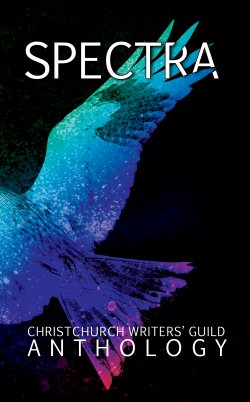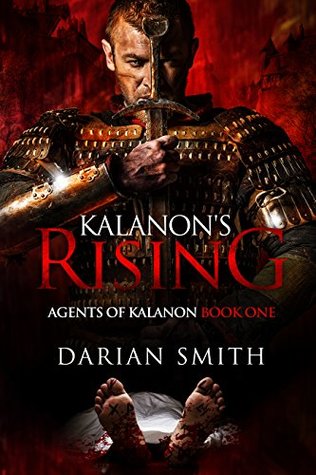I have recently finished creating the second anthology for our local writing group. And it has been quite an experience, through which I’ve made more than a few mistakes and learned a lot. Here I will include some of the lessons I have learned that should help you, should you ever be masochistic enough to attempt to create one of your own.
Firstly:
- Have a set deadline: The correct parameters for this are hard, one month may not be long enough, but six months generally leads to procrastination and a lack of contributions. I would recommend around 3-4 months, but be prepared to be flexible.
- Have a set format and established guidelines. Things you will need to inform your potential contributors are:
- word length: most anthologies ask for a maximum of 2,000-10,000 words, depending on the intended audience. If you are accepting poetry or flash fiction you probably won’t want to set a minimum length.
- theme: be very specific, unless you are opting for a general theme. However, if your theme is too specific, then you may find no-one will contribute.
- format: .doc or .rtf files are the most versatile.
- speech marks: as you will want these to be consistent throughout your anthology, I recommend double-smart quotes, as they are the easiest to adjust with find and replace (trying to find-and-replace straight quotes or single-smart quotes is a complex and aggravating mission).
- em/en-dashes: although it’s possible to find-and-replace these, it certainly saves time!
- font: you may like to specify font in your guidelines, I use Century Schoolbook, but this is relatively easy to adjust during the compilation process.
- language: UK spelling or US spelling. Be aware that NZ and Australian English tends to be a hybrid of the two and can allow inconsistencies.
- Make it clear that you are seeking stand-alone stories, and the plot structure you expect (ie: inciting incident, rising action, climax, conclusion).
- Unless you are publishing literally everyone who contributes, make it clear that not all pieces will necessarily be accepted.
- insist that all pieces must be spell/grammar checked! (however, this doesn’t give you an excuse not to have further editing done: see below).
When receiving contributions:
- Acknowledge immediately that you have received their submission. Offer them a date by which they will receive notification upon whether their story has been accepted.
Accept or deny? And how to notify the authors?
- There are three levels to this:
- Acceptance: the story fulfills all specifications, and is well-crafted and interesting, requiring minimal or “easy” edits.
- Refusal: the story either fails to fulfill the specifications: it’s too long, too short, not on theme, poorly crafted, or not actually a story at all.
- Acceptable, but needs revisions: Fulfills most of the specifications, but requires some work to be polished for publication. This is the hardest category to deal with.
- When informing an author that their story has not been accepted: be polite, and keep the reasons for denying it brief: ie: “I’m sorry but your story was too long”, or “I’m sorry, but your story does not fit the theme.” You can also use, “I’m sorry, but your story has not been selected for this anthology.” Do not enter into further correspondence if they try and argue why you should have accepted their story. Remember, it is your anthology, your decision. DO NOT, no matter what, offer a critique unless the author specifically asks for it.
- Minimal or easy edits are things like: changing idioms into something more era/theme-appropriate; fixing inconsistencies (like capitalising certain words sometimes, but not always), perhaps adding clarity to some of the vaguer details. These sort of edits shouldn’t take more than an hour or so.
- Needs revisions: This one is the hardest category to decide, so if there is any doubt then it is better to outright deny the story. Revisions shouldn’t require re-writing more than 10% or less of the story (that’s 600 words of a 6000 word story). It may include re-writing the ending, or adding in more detail to the beginning. Only request revisions from authors that are fairly skilled at the craft: don’t, for example, try and teach an author a skill they have not already displayed (ie: how to show not tell). If your author is expected to re-write even 10% of their story, then you want to be able to accept it if they do that, otherwise you’ve wasted their time and your reputation.
Once you’ve collected your (possibly slightly revised) stories and notified all your writers:
- Send out emails/contracts that specify copyright timeline (do your authors retain full reproduction rights, or does it become your exclusive property for 1 year, 5 year or more?) and other details, especially if payment is being offered.
- Have all stories proof-read, by as many editors as you can convince or afford!
- Decide what order they should appear in the book: when reading an anthology, a reader is likely to start at the beginning, so put your strongest story/stories first, but don’t have them growing steadily weaker or the reader will give up. I prefer to put short stories between the longer stories, and end with a relatively strong piece.
- Collect biographies for the “accepted” authors (specify relative word length and insist that they are written in third person).
- Start formatting, design your cover, etc.
- Keep authors updated with the process, either by email or regular blog/twitter posts. Authors like to know that you’re working hard with their stories! Offer a tentative timeline, and stick to it as closely as you can. If you start to fall behind, keep them informed.
Some things to be aware of:
- From initial deadline to actual publication date could take as long as six months, depending on how many proof copies you are required to order and whether you are printing offshore or locally.
- If you are privately creating an anthology, contributors may either expect payment or that your proceeds will go to charity. Realistically, the amount of time and effort you put into creating the anthology is going to exceed any actual financial gain. Only offer paying for stories if you are going to be able to at least break even.
- If you are creating an anthology for a specific group or cause, make sure there is information in said anthology about the group or cause.
- Be wary of offering free copies to every selected author, especially if you have to post them. If you are printing through a site like Createspace and have US authors, it will work out far cheaper to have them sent direct to the author. Posting internationally from New Zealand is expensive. Avoid if at all possible.
- Creating anthologies is extremely hard work and requires a lot of time and energy. It is not a task to be taking lightly.





